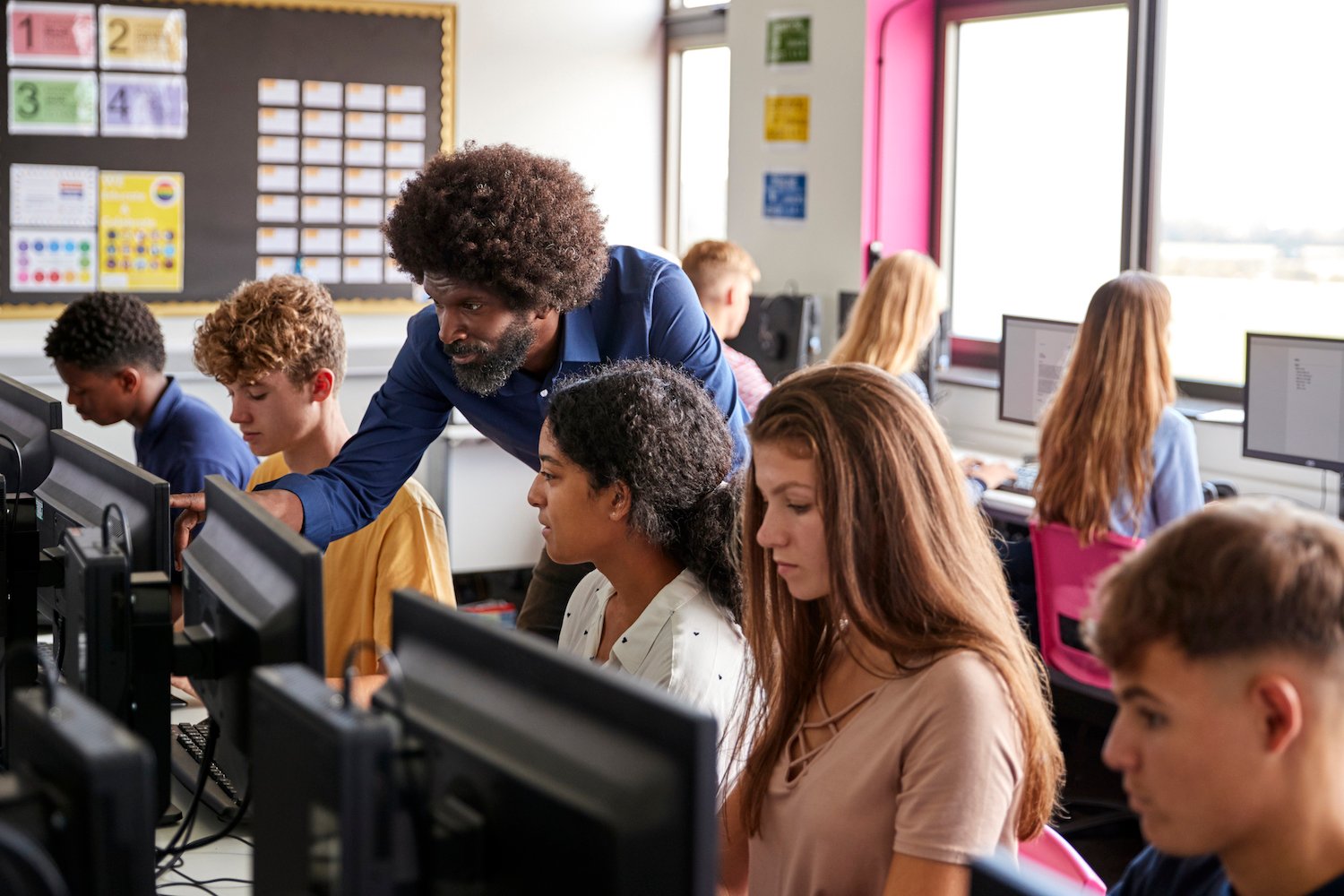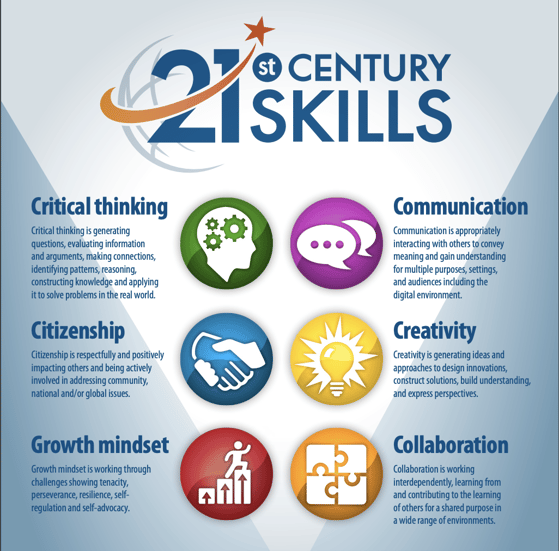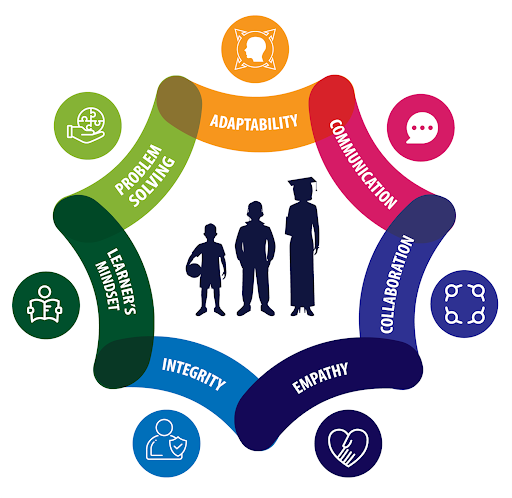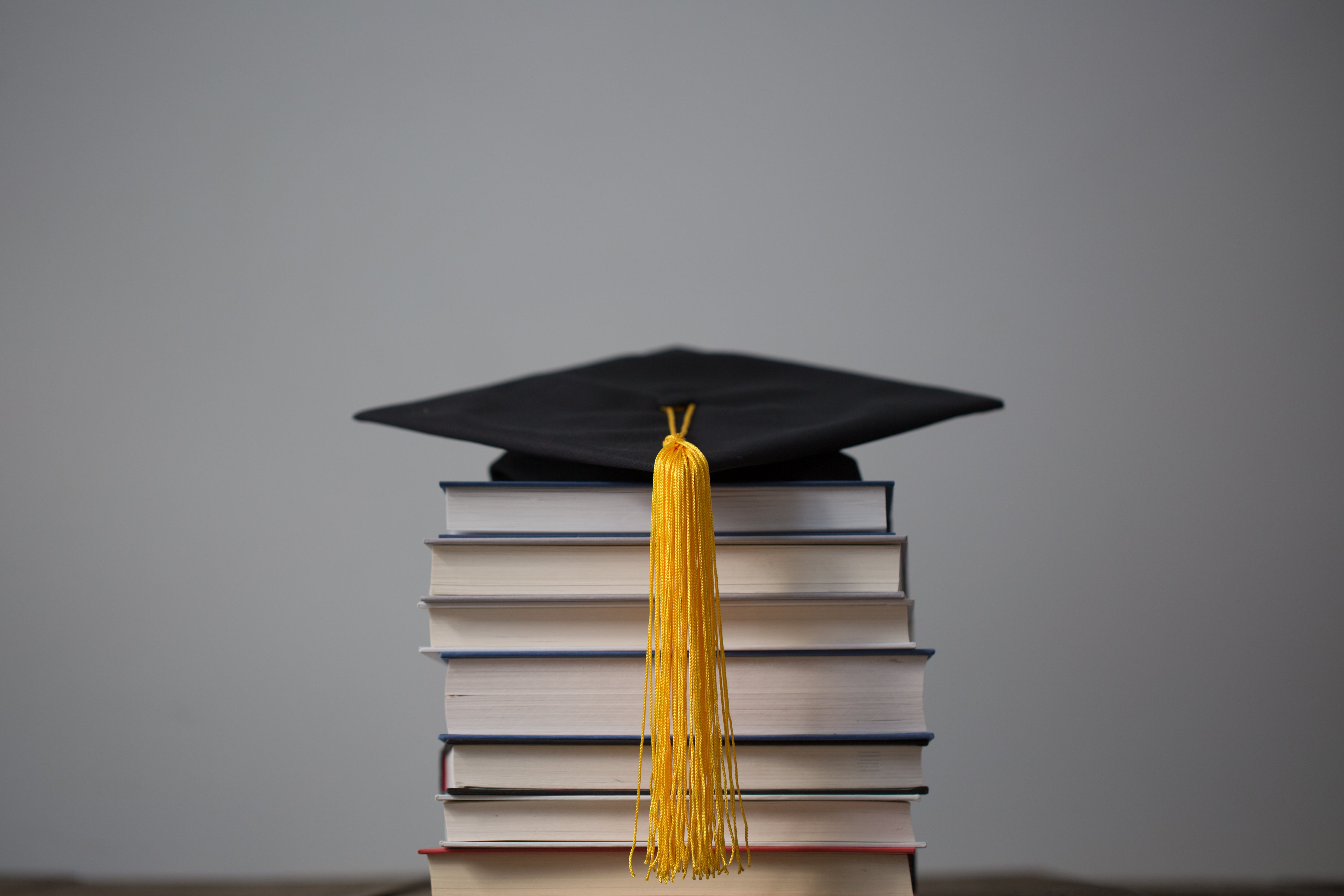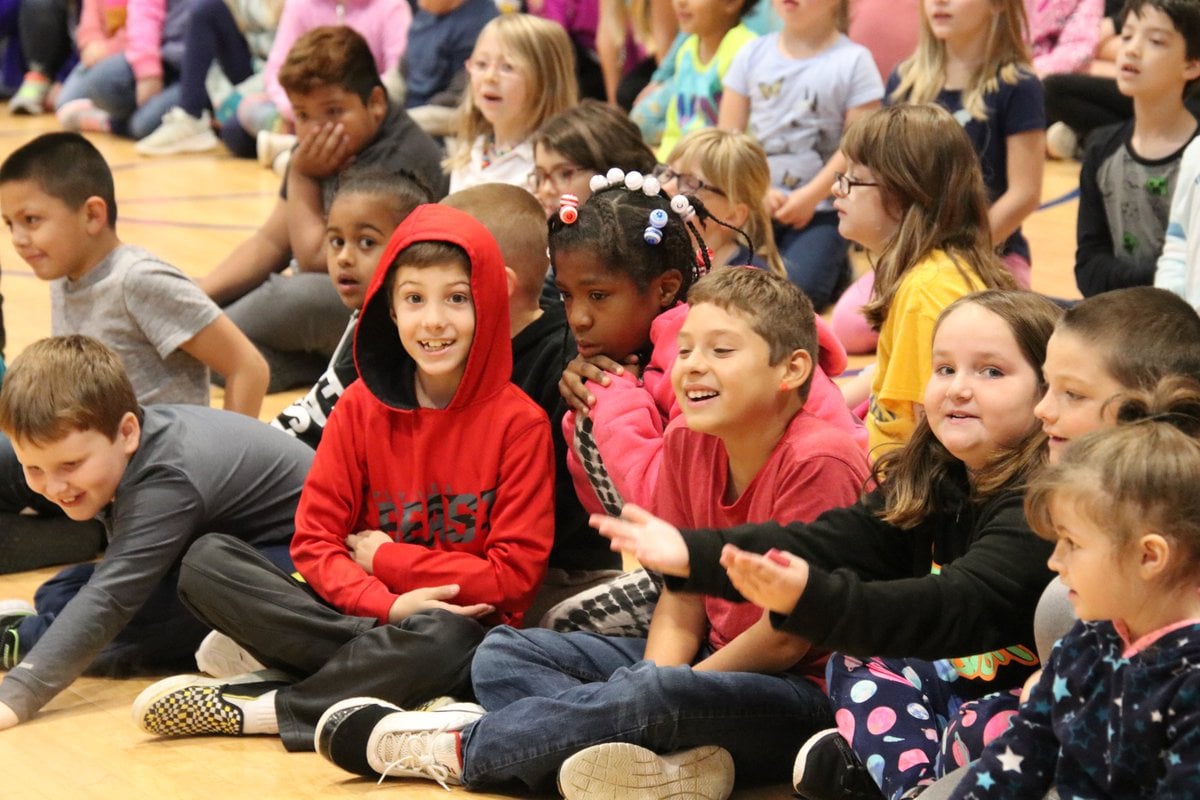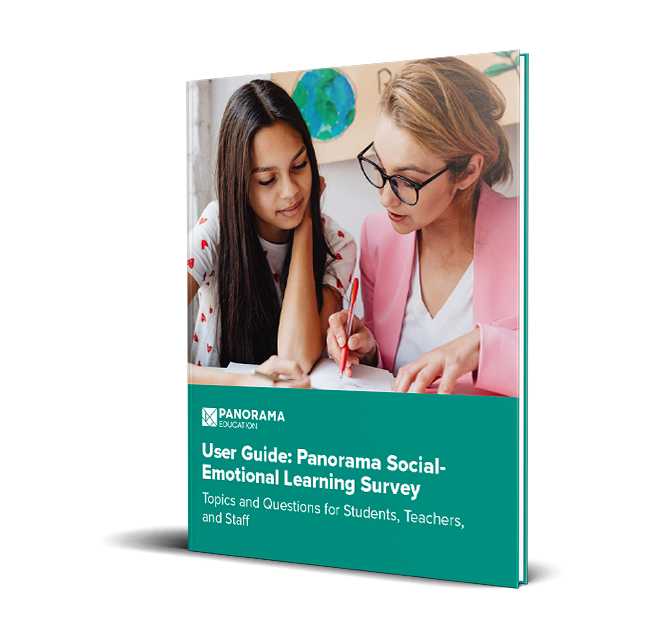The concept of "21st century skills" isn't new—skills like critical thinking, collaboration, and problem solving have been taught in classrooms for decades.
Yet, as the demands of our changing economy rise, many school districts are now including 21st century skills in strategic plans to better prepare students for college, career, and life.
What are 21st century skills, why do they matter, and how can your district implement 21st century learning strategies into curriculum, assessment, and instruction? This guide shares information, research, and examples to bring you up to speed.
Table of Contents
1. What Are 21st Century Skills?
2. The Importance of 21st Century Skills
3. Frameworks and Examples of 21st Century Skills
4. 21st Century Learning Strategies and Implementation
|
Key Takeaways:
|
Free Download: Panorama's Social-Emotional Learning Survey
What Are 21st Century Skills?
|
|
Districts, schools, and organizations prioritize different 21st century skills depending on what is most important to their respective communities. Generally, however, educators agree that schools must weave these skills into learning experiences and common core instruction. Here is a non-exhaustive list of the most commonly cited 21st century skills.
- Critical thinking
- Communication skills
- Creativity
- Problem solving
- Perseverance
- Collaboration
- Information literacy
- Technology skills and digital literacy
- Media literacy
- Global awareness
- Self-direction
- Social skills
- Literacy skills
- Civic literacy
- Social responsibility
- Innovation skills
- Thinking skills
The Importance of 21st Century Skills
While the bar used to be high school graduation, the bar for today's students is now college, career, and real-world success. Let’s take a look at why 21st century skills matter.
- Higher-education and business leaders cite soft skills as being the most important driver of success in higher-level courses and in the workplace.
- In today’s world, our schools are preparing students for jobs that might not yet exist. Career readiness means equipping students with a nuanced set of skills that can prepare them for the unknown.
- Social media has changed human interaction and created new challenges in navigating social situations.
- The age of the Internet has dramatically increased access to knowledge. Students need to learn how to process and analyze large amounts of information.
- Content knowledge from core subjects can only go so far; students need to be taught how to apply facts and ideas towards complex problems.
We've reviewed the definition of 21st century skills and why they're important in a changing world. Now, let's review a few frameworks and how school districts are putting 21st century learning into practice.
Frameworks for 21st Century Skills
The Framework for 21st Century Learning
This popular framework was designed by the Partnership for 21st Century Skills (P21). Describing the skills, knowledge, and expertise students must master to succeed in work and life, the framework combines content knowledge, specific skills, expertise, and literacies. P21 believes that the "base" of 21st century learning is the acquisition of key academic subject knowledge, and that schools must build on that base with additional skills including Learning Skills, Life Skills, and Literacy Skills.
- Learning Skills: Also known as the "four Cs" of 21st century learning, these include critical thinking, communication, collaboration, and creativity.
- Life Skills: Flexibility, initiative, social skills, productivity, leadership
- Literacy Skills: Information literacy, media literacy, technology literacy
World Health Organization
The World Health Organization (WHO) identifies the fundamental life skills as decision-making and problem solving, creative thinking and critical thinking, communication and interpersonal skills, self-awareness and empathy, and coping with emotions and stress. The WHO focuses on broad psychosocial skills that can be improved over time with conscious effort.
Redefining Ready! Initiative
The American Association of School Administrators (AASA) Redefining Ready! initiative offers a framework that many districts use to define college, career, and life readiness. AASA provides readiness indicators to capture the educational landscape of the 21st century. Metrics include Advanced Placement courses, standardized testing, college credits, industry credentials, attendance, community service, and more.
On the topic of life readiness, AASA argues:
|
|
School District Frameworks
21st century skills take hold in various ways for school districts. A "Portrait of a Graduate" is one common strategy for communicating what it means for students to be college, career, and future ready.
To develop a profile of a graduate, districts often adapt existing 21st century skill frameworks to fit their needs. Input from stakeholders—such as the district board, teachers, parents, partner organizations, and students—ensures that the final "portrait" is authentic to their community. Here are some Portrait of a Graduate examples.
Everett Public Schools in Everett, Washington defines 21st century skills as citizenship, collaboration, communication, creativity, critical thinking, and growth mindset. The district believes that graduates are college, career, and life ready when they have the academic knowledge, attitudes, and skills to transition to college level coursework, workforce training, and/or employment.
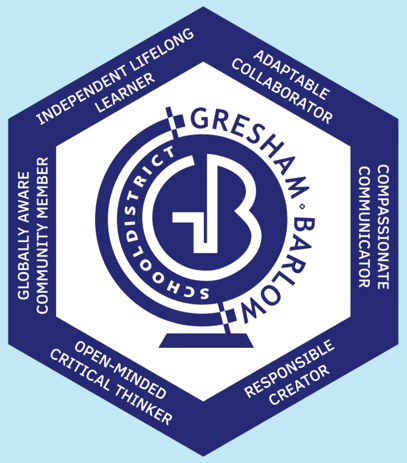 via Gresham-Barlow School District
via Gresham-Barlow School District
Gresham-Barlow School District (GBSD) in Gresham, Oregon has a mission to develop culturally responsive graduates who will thrive in an ever-changing global community. The district’s Portrait of a Graduate represents the GBSD community's collective vision of what their graduates should look like. The portrait consists of six learner profiles: Independent Lifelong Learner, Adaptable Collaborator, Compassionate Communicator, Responsible Creator, Open-Minded Critical Thinker, and Globally Aware Community Member.
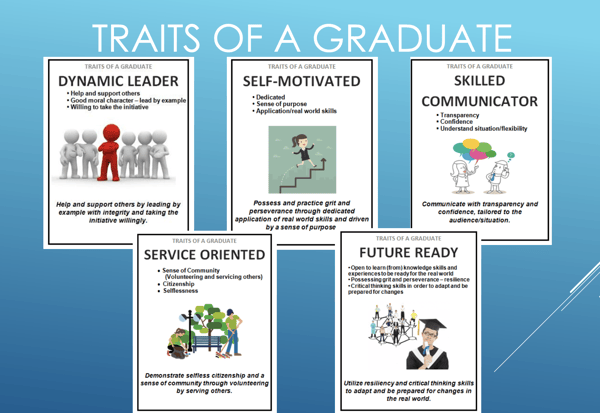 via Schertz-Cibolo-Universal City ISD
via Schertz-Cibolo-Universal City ISD
Schertz-Cibolo-Universal City Independent School District (SCUC ISD) in Schertz, Texas has a strategic goal around graduating college and/or career and/or military ready students. Within this vision, SCUC ISD has outlined five Traits of a Graduate: Dynamic Leader, Self-Motivated, Skilled Communicator, Service Oriented, and Future Ready.
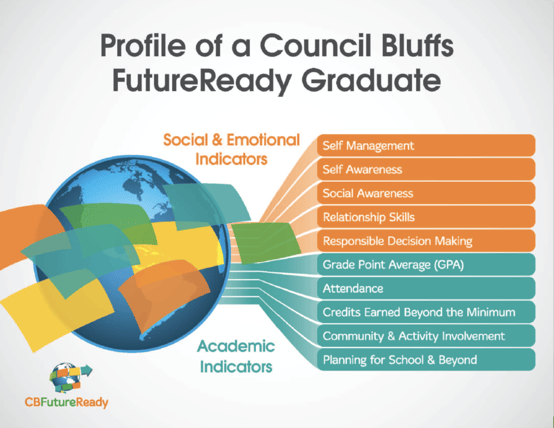 via Council Bluffs Community School District
via Council Bluffs Community School District
Council Bluffs Community School District in Council Bluffs, Iowa, developed a Profile of a FutureReady Graduate that encompasses both academic and social-emotional indicators of success. The district’s social-emotional indicators—aligned to the CASEL framework—include Self-Management, Self Awareness, Social Awareness, Relationship Skills, and Responsible Decision Making.
North Kansas City Schools just north of Kansas City, Missouri, identified seven competencies that span time, space, jobs, and occupations, ensuring that students' life skills are highly transferable. The district's competencies—developed with input from students, community and business leaders, teachers, and administrators—include Adaptability, Communication, Collaboration, Empathy, Integrity, Learner's Mindset, and Problem Solving.
Download our guide to developing your district's own vision for college, career, and life readiness
21st Century Learning Strategies & Implementation
Having a strong vision for 21st century learning is just the first step. Without an intentionally designed plan for implementation, it's unlikely that your students will acquire the skills outlined in your district's vision. Here are some best practices from Panorama's partner districts to set you up for success.
1. Build staff capacity to demonstrate 21st century skills in support of student learning.
It all starts with the adults in your building. Teachers and staff need to deeply understand and model the skills that you want your students to develop. Integrate 21st century skills into staff professional development as a precursor to growing these competencies in students. Download our Adult SEL Toolkit for ideas, worksheets, and activities to build adult SEL.
2. Develop strategies to support teachers with implementation of 21st century skills.
It can be helpful to create a playbook of recommended strategies and approaches that span across content areas. For instance, you might encourage teachers to add comments to report cards about students' 21st century skills.
3. Assess students’ 21st century learning skills.
What gets measured matters. Regularly collect data on how students are progressing in this area, whether the data is anecdotal, qualitative, or quantitative. For example, you might administer a biannual survey in which students reflect on their development of 21st century, social-emotional skills. Keep in mind that the data you gather should be formative rather than evaluative. Be transparent about the purpose.
4. Equip educators with data to proactively identify and support students who are off track.
Once you have data on students' 21st century skills, you'll want to ensure that the data is actionable for educators. Many districts opt to implement an early warning system with indicators across academics, attendance, behavior, and social-emotional learning/21st century skills. This helps educators make data-driven decisions about the best way to keep each student on track.
Additional Resources
Looking for more information on 21st century skills? Here are some other articles and resources to explore:
- "Why Social and Emotional Learning and Employability Skills Should Be Prioritized in Education" via CASEL and Committee for Children
- "Teaching 21st Century Skills For 21st Century Success Requires An Ecosystem Approach" via Forbes
- "Bringing 21st Century Skill Development to the Forefront of K-12 Education" via Hanover Research
- "How Do You Define 21st-Century Learning?" via Education Week
|
Frequently Asked Questions: 1. What are some specific examples of 21st century skills in action in educational settings? Examples include students collaborating on a group project to solve a real-world problem, using technology to research and present information, critically analyzing media sources, and demonstrating empathy and social responsibility through service-learning projects. 2. How can educators effectively integrate 21st century skills into their existing curriculum? Educators can integrate 21st century skills by designing learning experiences that encourage critical thinking, communication, collaboration, and creativity. This can involve incorporating project-based learning, inquiry-based activities, and opportunities for student choice and reflection into their teaching practices. 3. What are some challenges educators might face when trying to implement 21st century skills in their classrooms? Challenges may include lack of resources or training in integrating 21st century skills, difficulty in assessing these skills effectively, and addressing the diverse needs and backgrounds of students while fostering collaboration and creativity in the classroom. 4. Can parents play a role in supporting the development of 21st century skills at home, and if so, how? Yes, parents can support the development of 21st century skills by encouraging their children to engage in activities that promote critical thinking, communication, and problem-solving, such as discussing current events, working on creative projects together, or volunteering in the community. Additionally, parents can model these skills in their own behavior and provide opportunities for their children to practice them in everyday situations. |
Conclusion
Honing in on 21st century skills is essential to ensuring that students are prepared for college, career, and civic life. While there is no one "right" way to approach this work, we hope that the information in this guide inspires you to explore what 21st century learning could look like in your district!
Develop students' 21st century skills with Panorama's Social-Emotional Learning Survey



